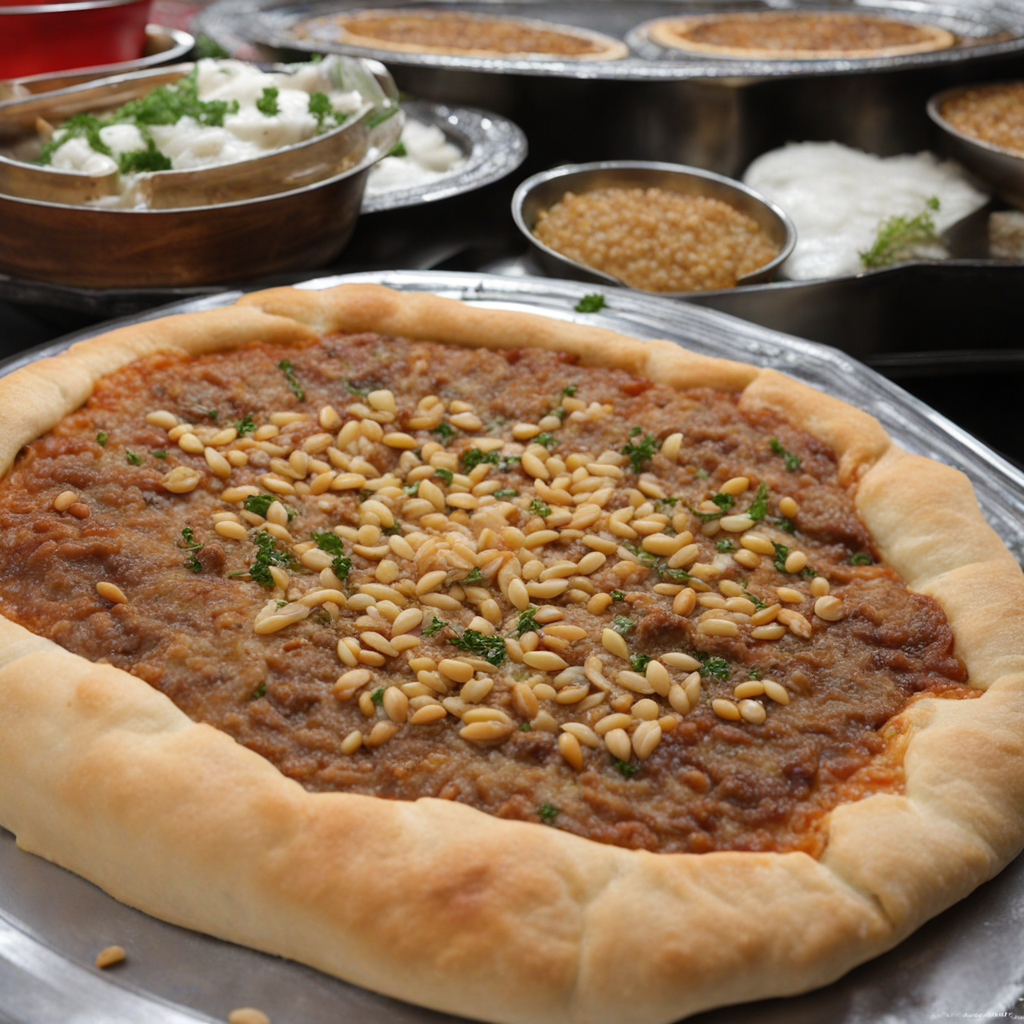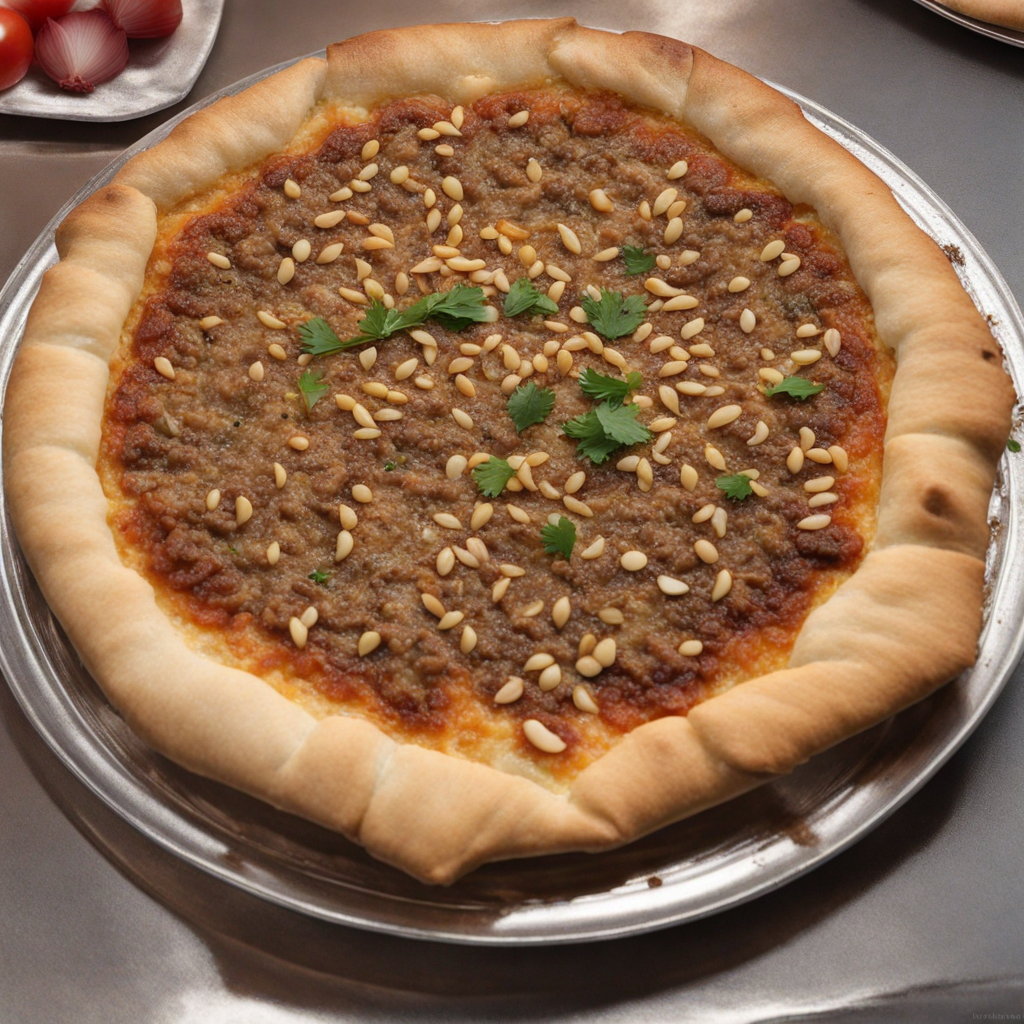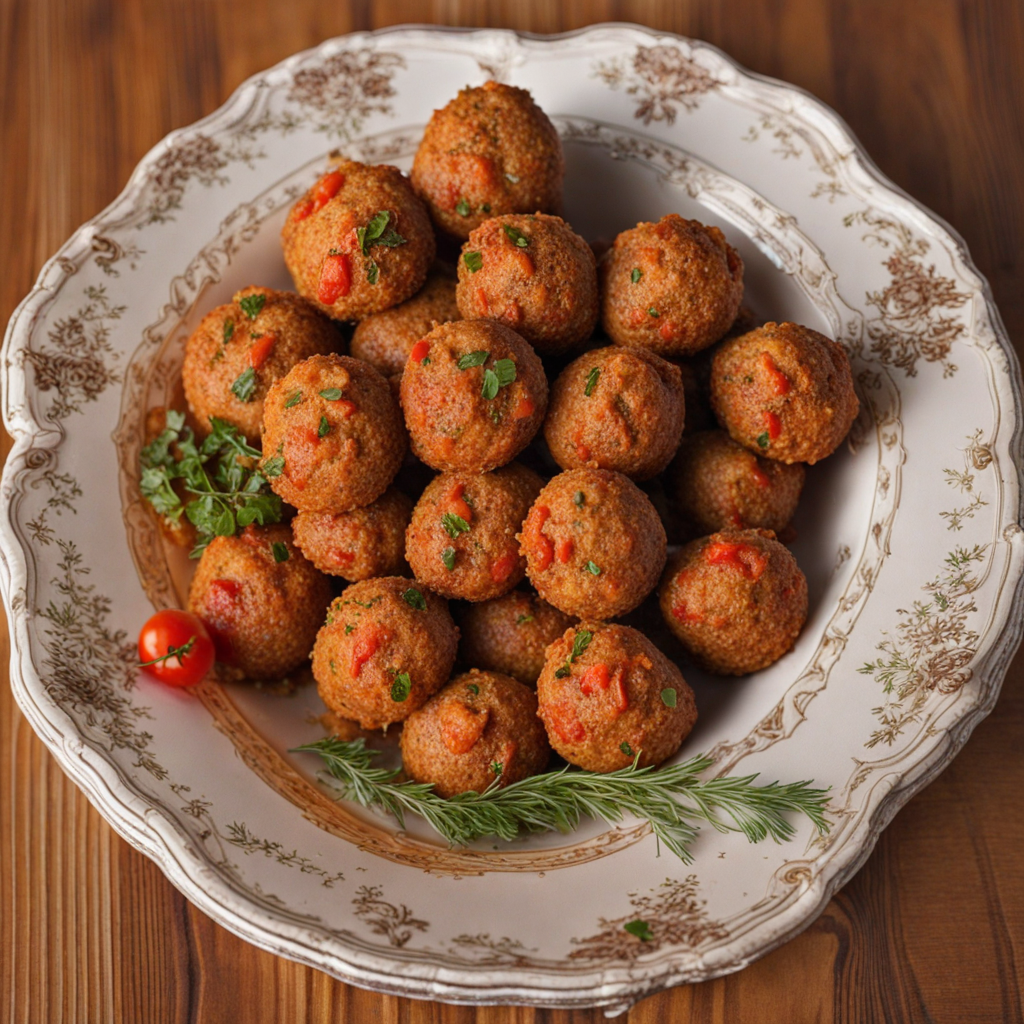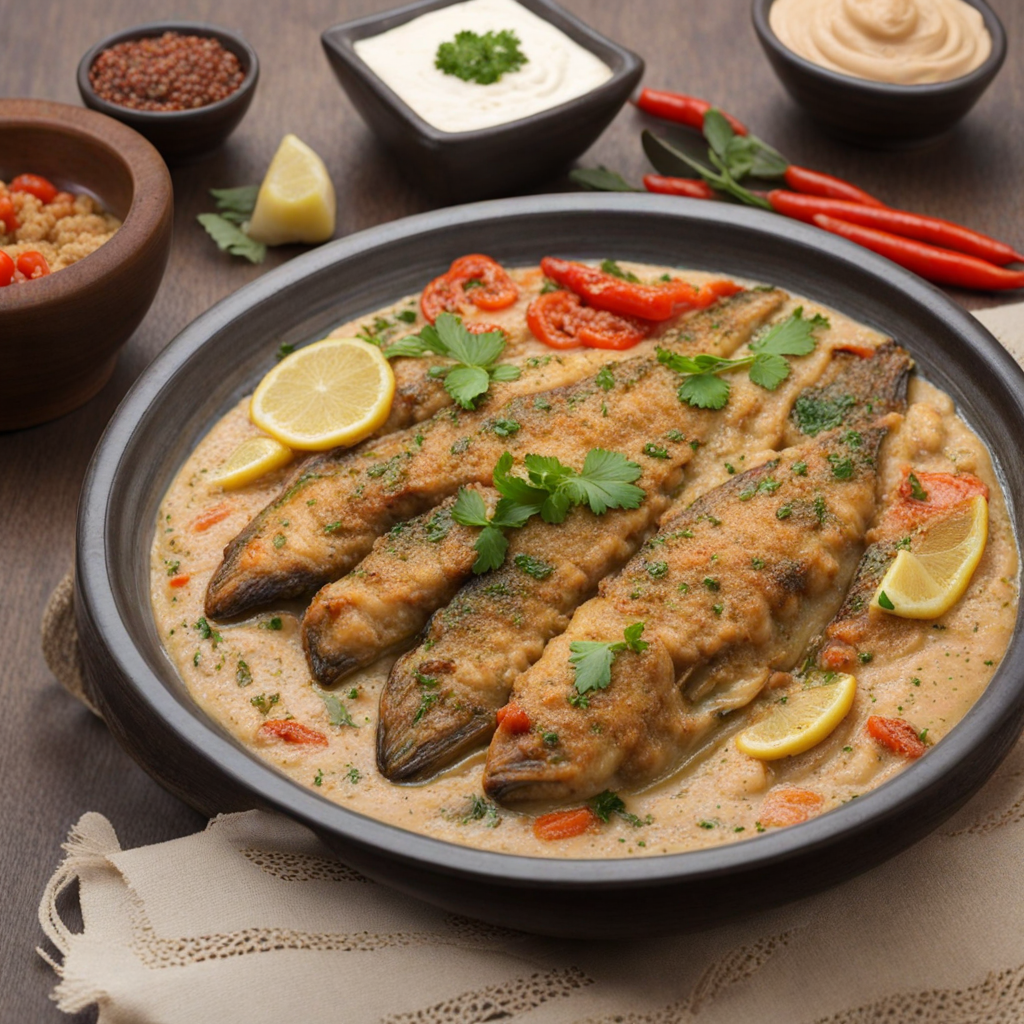Lahm bi ajin
Lahm bi ajin is a delightful Lebanese dish that beautifully combines the flavors of spiced meat and fresh dough. At its core, this savory pastry features a thin, hand-stretched layer of dough, akin to a pizza base, which is topped generously with a mixture of finely ground lamb or beef. The meat is seasoned with an aromatic blend of spices, including cinnamon, allspice, and nutmeg, along with fresh herbs like parsley and mint, which elevate the dish's flavor profile to a new level of culinary excitement. The result is a harmonious balance of rich meatiness and fragrant spices, creating an irresistible aroma that fills the air when baked. The preparation of Lahm bi ajin showcases the art of Lebanese cuisine, where the dough is rolled out to a perfect thickness, ensuring it remains soft and chewy yet able to hold the weight of the toppings. Once spread with the seasoned meat mixture, it is baked until the edges are golden brown and crisp, while the meat is cooked to tender perfection. Traditionally, it is served in rectangular slices, making it easy to share and enjoy with family and friends. The dish is often accompanied by fresh vegetables, pickles, or yogurt, adding a refreshing contrast to the savory richness of the meat. Lahm bi ajin is not just a dish; it is a cultural experience steeped in tradition. It is commonly found at family gatherings, festive occasions, and bustling street food markets across Lebanon, where it is enjoyed by locals and tourists alike. The combination of textures—from the soft, pliable dough to the succulent, spiced meat—along with the vibrant flavors, makes this dish a must-try for anyone looking to expand their palate. Each bite offers a taste of Lebanon's rich culinary heritage, inviting you to savor the warmth and hospitality that the country is known for.
How It Became This Dish
Origins of لحم بعجين لحم بعجين, often referred to as "lahmacun" in Turkish, is a traditional dish that has its roots in the Levant region, particularly in Lebanon. Its name literally translates to "meat with dough," which perfectly encapsulates its essence: a thin, round flatbread topped with a mixture of minced meat, spices, and vegetables. The exact origins of لحم بعجين are somewhat obscured by the mists of history, but it is widely believed that it emerged from the culinary traditions of the ancient civilizations that inhabited the region, including the Phoenicians and later the Arab peoples. The dish is thought to have been influenced by the diverse cultures that have occupied Lebanon throughout history. The introduction of spices and cooking techniques from Persian, Ottoman, and Arab cuisines contributed to the evolution of this dish. As trade routes flourished and cultures mingled, the recipes for لحم بعجين began to take on various regional characteristics, reflecting the rich tapestry of Lebanon's culinary heritage. \n\n Cultural Significance In Lebanon, لحم بعجين is more than just a dish; it is a cultural emblem that embodies the country's communal spirit and culinary diversity. Traditionally served at family gatherings, celebrations, and street food stalls, it is enjoyed by people from all walks of life. The preparation of لحم بعجين often involves family members working together, creating a sense of unity and shared experience. The dish also holds a special place in Lebanon's culinary festivals and events. It is commonly found at weddings, communal feasts, and various celebrations, showcasing its significance in Lebanese hospitality. The act of sharing لحم بعجين among friends and family symbolizes generosity and warmth, reinforcing social bonds and cultural traditions. \n\n Ingredients and Preparation The basic ingredients of لحم بعجين include a simple dough made from flour, water, yeast, and salt, which is rolled out into thin rounds. The topping typically consists of minced lamb or beef mixed with finely chopped vegetables such as onions, tomatoes, and bell peppers, along with a medley of spices like cumin, paprika, and cinnamon. This combination creates a harmonious balance of flavors that is both savory and aromatic. Preparation of لحم بعجين can vary from one household to another, with each family adding their own unique twist to the recipe. Some might include additional herbs, like parsley or mint, while others may opt for a spicier topping with the addition of chili peppers. The versatility of this dish is one of its most appealing features, allowing it to adapt to the tastes and preferences of different generations. \n\n Regional Variations As with many traditional dishes, لحم بعجين has inspired a variety of regional adaptations. In Turkey, lahmacun is often slightly thicker and can be topped with a squeeze of lemon and fresh herbs before serving. In Syria, the dish may feature a different spice blend, emphasizing the local flavors and culinary techniques. Each variation tells a story of the people and places that have embraced this beloved dish. In addition to its regional adaptations, لحم بعجين has also found its way into the diaspora communities around the world. Lebanese immigrants have introduced this dish to cities globally, leading to the emergence of Lebanese restaurants that serve it alongside other traditional dishes. In these settings, لحم بعجين continues to be a symbol of cultural identity and a way for immigrants to maintain connections to their heritage. \n\n Modern Interpretations With the rise of contemporary culinary trends, لحم بعجين has seen a resurgence in popularity, particularly among younger generations. Chefs are experimenting with new toppings and techniques, incorporating gourmet ingredients such as truffle oil or artisanal cheeses. This modern twist has helped to elevate the dish beyond its traditional roots, appealing to a wider audience and showcasing the versatility of Lebanese cuisine. Food trucks, pop-up restaurants, and casual dining establishments have also embraced لحم بعجين, often presenting it as a quick and delicious street food option. The convenience factor, combined with the rich flavors and aromas, has made it a favorite among food enthusiasts and casual diners alike. \n\n Conclusion and Global Influence The story of لحم بعجين is a testament to the dynamic nature of food and its ability to transcend cultural boundaries. As it has traveled from its origins in Lebanon to various parts of the world, it has evolved and adapted, reflecting the influences of different culinary traditions. The dish serves as a reminder of the interconnectedness of cultures and the ways in which food can foster understanding and appreciation among diverse communities. In recent years, the global interest in Middle Eastern cuisine has further propelled the popularity of لحم بعجين. Food bloggers, chefs, and culinary enthusiasts have spotlighted the dish, encouraging a renewed appreciation for its flavors and history. As a result, لحم بعجين continues to be celebrated not only as a staple of Lebanese cuisine but also as a cherished dish that connects people across cultures and generations. In conclusion, لحم بعجين remains a vibrant part of Lebanon's culinary landscape and a delicious representation of its rich history, cultural significance, and ongoing evolution. Whether enjoyed in a traditional setting or at a modern eatery, this dish captures the essence of Lebanese hospitality and the enduring power of food to bring people together.
You may like
Discover local flavors from Lebanon







